In a survival scenario, being seen can turn you into a target. Whether you’re dodging threats in the wilderness or navigating a crisis in the city, mastering camouflage and concealment is as essential as knowing how to build a fire or find shelter.
This guide breaks down the best strategies to blend into any environment and move undetected—skills every survivalist needs in their toolkit.
Why Camouflage and Concealment Matter
Staying out of sight isn’t just a cool trick—it’s a survival necessity. Here’s why these skills are critical:
- Avoid Detection: From predators to pursuers, staying hidden keeps you off their radar.
- Enhance Stealth: Hunt, scout, or escape without drawing attention.
- Maintain Tactical Advantage: In a crisis, being unseen gives you the upper hand.
These aren’t just for elite operatives—anyone can learn them to boost their survival odds.
1. The Difference Between Camouflage and Concealment
These terms get tossed around interchangeably, but they’re distinct:
- Camouflage: This is about blending in visually. Think clothing, gear, or natural materials that match your surroundings’ colors and patterns.
- Concealment: This focuses on hiding your presence using the environment—terrain, shadows, or obstacles—to break your shape and avoid detection.
Pro Tip: Combine both for the ultimate invisibility cloak—camouflage to blend, concealment to vanish.
2. Camouflage by Environment
Your terrain sets the rules. Here’s how to disappear in any setting:
Woodland or Forested Areas
- Colors: Greens, browns, and blacks mimic the forest palette.
- Patterns: Irregular, leaf-like designs work best.
- Natural Boost: Smear mud on skin and tie leaves or grass to gear with string.
Desert or Arid Landscapes
- Colors: Tan, beige, and light browns blend with sand and rock.
- Patterns: Subtle, sandy textures—no bold contrasts.
- Shadow Play: Stay low to avoid casting obvious shadows.
Snowy or Alpine Conditions
- Colors: White and light gray are your go-tos.
- Gear Hack: Drape a white sheet or poncho over your pack.
- Debris Trick: Sprinkle snow over yourself to break up your outline.
Urban Settings
- Colors: Neutral tones—gray, navy, black—blend with concrete jungles.
- Blend In: Dress like a local; ditch tactical gear that screams “survivalist.”
- Gear Concealment: Use a plain backpack to hide tools.
Insight: Scout your area first—what works in the woods flops in the city.
3. DIY Natural Camouflage
Nature’s got your back. Here’s how to use it:
- Mud: Slap it on shiny gear or exposed skin to kill reflections.
- Charcoal: Smudge it on your face to dull shine and blur features.
- Flora: Attach grass, leaves, or bark to clothing with cordage or vines.
Hack: Grab a mesh net or burlap sack—tie on natural materials for a quick, budget-friendly ghillie suit.
4. Concealment Tactics for Movement
Moving without being spotted is a game-changer. Here’s how:
- Time It Right: Travel at dawn or dusk when light’s dim and shadows stretch.
- Stay Low: Crawl or crouch behind rocks, bushes, or walls.
- Noise Discipline: Let wind, rain, or traffic cover your footsteps.
- Avoid Skylining: Don’t silhouette yourself against ridges or bright horizons.
Stealth Tip: Slow and smooth beats fast and jerky—sudden moves catch eyes.
5. Camouflage and Shelter
Your hideout needs to blend in too:
- Tarp Choice: Pick colors matching your environment—green for forests, tan for deserts.
- Gear Cover: Bury reflective or bright items under leaves or dirt.
- Edge Blending: Pile branches, snow, or debris around your shelter to soften its shape.
Bonus: Build in natural dips or behind features like hills for extra cover.
6. Urban Camouflage and Concealment
Cities demand a different approach. Here’s how to fade into the urban jungle:
- Use Alleys and Doorways: Stick to less-traveled routes.
- Stick to Shadows: Hug walls and avoid lit areas.
- Dress the Part: Match local styles—nothing flashy or tactical.
- Gear Discretion: Swap camo bags for plain ones; blend, don’t stand out.
Urban Hack: Carry a clipboard or wear a high-vis vest—people assume you’re supposed to be there.
7. Common Mistakes to Avoid
Even seasoned survivalists mess up. Dodge these traps:
- Shiny Gear: Watches, tools, or jewelry can flash like a beacon—cover or ditch them.
- Silhouetting: Standing against bright backdrops makes you a sitting duck.
- Sudden Moves: Quick actions draw eyes—keep it slow and deliberate.
- Noise Traps: Clanking gear or crunchy leaves can betray you. Pad items and step carefully.
Pro Reminder: Test your setup—check what stands out in a mirror or with a friend.
Frequently Asked Questions (FAQs)
1. Can I use military camo patterns for survival?
Yes, but match them to your environment. In some cases, civilian clothes or natural materials are less conspicuous.
2. How long does DIY natural camouflage last?
Mud and charcoal might hold for hours, but sweat or brush can wear them off—reapply as needed.
3. What’s the fastest way to conceal myself in the wild?
Dive into thick underbrush or a terrain dip, lie flat, and pile on local debris. Freeze until the coast is clear.
Conclusion
Camouflage and concealment aren’t just tricks—they’re survival superpowers. By blending into your surroundings and mastering stealthy movement, you can stay safe and in control, no matter the scenario.
🕵️ Tried these tactics? Drop your story in the comments—we’d love to hear!




